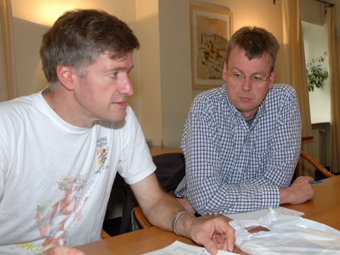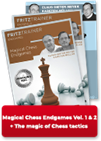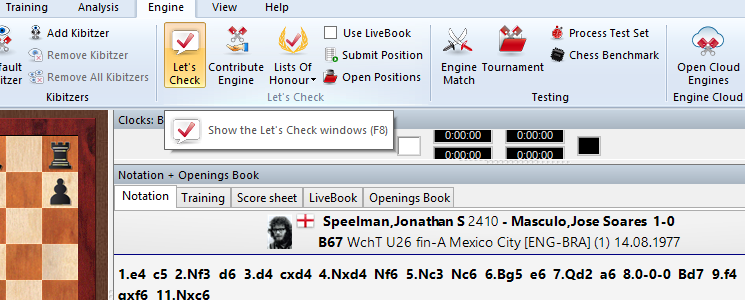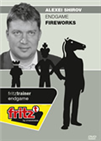Study of the Month: April 2021
What is an ‘endgame study’? By definition, it is (unless an author specifies otherwise) a position in which White wins or draws in exactly one way.
How do you know that there is exactly one way? Endgame tablebases (EGTB) are a proof, but unlike many other genres, there is no way to use brute force or heuristically solve an endgame study to find a complete proof of it being correct. That is where cook hunters come in. A cook is an incorrectness in an endgame study, either a refutation or a dual. A dual first and refutation later might lead to a unique solution, but not to a correct study usually, as the author’s intention is lost. Let’s explore cooks!
Personally, I have browsed through a pretty famous German book in the past weeks, 1000 Väter, about the ‘Many Fathers Problem’. Hilmar Alquiros (formerly known as Hilmar Ebert / Hilmar Klaus) has made the book, together with a few others, available on his website for free (click 1000 Väter at the link, or any other book you’re interested in) many years ago. For me, however, the physical form is a great help in reading. Together with Hans Gruber I check the book for errors — those include typographical errors as well as incorrectnesses of problems, or cooks, as they are called in the chess problem terminology.

Hans Gruber & Volker Gülke, 2006 | Photo: ChessComposers
It is called ‘cookhunting’ to find such errors in problems. This activity can be a casual or leisurely thing happening automatically while reading, or something to specifically concentrate on. For example, with endgame studies this can be as easy as having a computer program running while browsing all studies of a certain author or source.
Many years ago there was a major discovery in the endgame studies community: two bishops generally win against a knight even if the king and knight build up a fortress. The fortress that with best play can be reinstated at the other side of the board, as it was believed, can be broken there, but the path is difficult. By creating endgame tablebases with input and output, byte-shifting, calculation, computers have changed endgame theory, and broken many endgame studies.
(On a side note, a few weeks ago I learned about Russian multiplication, a multiplication method that explains how computers can multiply numbers just by shifting bytes and such. Prior to seeing the Numberphile video this was a major mystery to me.)
The application of such tablebases to add their cooks to existing studies is merely a matter of work by someone who looks through endgame studies, but not of real cookhunting, as that job was done by the computer as fundamental work. For composers who don’t want to download the databases, online analysis is available. I personally use a free website which can check positions with up to six pieces, as well as local tablebases with up to five pieces. Preferably, of course, I should download all six-piece tablebases to use locally.
Some commercial software and plans include access to the Lomonosov tablebases with up to seven pieces. Those tablebases are too big for the end-user to store on their own computer, and hard disks only slowly gain more space. The ‘Let’s Check’ web app incorporates them since early 2020, but I don't have personal experience with it.
 In over 4 hours in front of the camera, Karsten Müller presents to you sensations from the world of endgames - partly reaching far beyond standard techniques and rules of thumb - and rounds off with some cases of with own examples.
In over 4 hours in front of the camera, Karsten Müller presents to you sensations from the world of endgames - partly reaching far beyond standard techniques and rules of thumb - and rounds off with some cases of with own examples.
I do have experience, however, with cookhunting without tablebases. This also can be greatly assisted or even be completely done by the computer. In endgame studies, the evaluations are a good indication, if they are positive enough (usually 0.5 to 1 pawn unit upwards) a check for a possible win is in order, similarly for draws and losses. A thorough check would require checking lines that don’t seem suspicious at first, but I believe such a heuristic approach of checking only suspicious lines (whether indicated by the computer or by the own mind), while not being completely accurate, is the best for time-efficiency. Usually, each computer finds what needs to be checked by a human, and even then errors can happen, so some reported cooks might not be correct, and reported non-cooks (i.e. earlier found cooks that supposedly aren’t) might be cooks themselves.
In earlier times, endgame fortresses and similar material imbalances that can’t be overcome because the weaker side can’t be forced into a loss were not understood by engines, which gave a wrong advantage evaluation to one side. Humanly, the draws were often apparent. At other times, a complicated position might lead to a wrong evaluation that has to be refuted by lots of research into lines and sidelines (study term: ‘analytical variations’). On the other hand, such an evaluation of a study being cooked also could be correct, when the sidelines confirm that the other side (usually Black) can draw or win.
On 16 March 2021, Harold van der Heijden wrote (in an e-mail forwarded by him on 3 April 2021 to me; note that the article mentioned at the first link might be downloaded as PDF, depending on your browser and settings. The original PDF is located here):
The term “cook” in English does not only refer to second solutions or duals. Many people, like myself, also use it for refutations (unsoundness). Also “duals” is not so clear, some reserve this qualification for a minor dual rather than a second solution. For the endgame study area I wrote an article on minor duals which I believe has received general recognition.
The English say: “I cooked a study” intending to say that they have found a study to be unsound (unsound, second solution, dual), i.e. something like “I wasted a study”.
It seems that some websites ascribe this term to the problemist Eugene Cook. But I think that there is no proof for that.
I agree that there likely is no connection to Eugene B. Cook, but we reproduce one of his endgame studies below, as it is useful for practical play. You can try to solve it, or replay the solution in the widget below the article. Mario Garcia kindly supplied a link to the UAPA project for corrections of endgame studies, but nearly no background information is found.
As such, following, I can only detail my own experiences. Around 2004, I started looking through the database of Harold van der Heijden (‘Endgame Study Database 2000’ published by ChessBase). In any case, I somehow found out the phone number of Harold van der Heijden and asked him if I can send in observations. This was before I had internet at home, and my English was bad, resulting in misunderstandings and language of mine that was too strong against composers. Harold correctly scolded me for the language I had used, but gave me a second chance and reviewed the observations I had sent in. I adjusted my language for future contributions.
Back then, I mainly looked through the endgame studies of German magazines, as well as interesting composers such as Kasparyan.
Studies I found while browsing randomly also became my ‘victims’:
 On this DVD Alexei Shirov shows that also in the endgame, it is possible to keep struggling for the full point to the very last - if you are creative and ambitious. Because even in objectively quite balanced positions, you can frequently find ways to sharpen up or complicate the fight. For the tournament player, often all that matters is to be able to pose practical problems which his or her opponent might finally fail to solve.
On this DVD Alexei Shirov shows that also in the endgame, it is possible to keep struggling for the full point to the very last - if you are creative and ambitious. Because even in objectively quite balanced positions, you can frequently find ways to sharpen up or complicate the fight. For the tournament player, often all that matters is to be able to pose practical problems which his or her opponent might finally fail to solve.
Hasek wanted to win with 1.h7+ Kh8 2.Qa1, but there is no win. Black defends either with 2.-Qd8+ 3.Kg6+ d4, or more elegantly with 2.-d4 3.Q:d4 Qd7! 4.Q:d7 stalemate.
Such variations are easy to find with a computer, but the composer also could have found them.
Oftentimes, corrections are possible. A symbiosis of cookhunter and corrector exists insofar as one person might find a cook while another will correct an endgame study.
Mario Garcia cooked this endgame study because White can play Nb6 at a time where the composers didn’t expect. This can’t be corrected, but the study can be saved, as I tried in 2015.
Here the solution is unique and mostly as intended: 1.d6 h3 2.d4 Rc6 3.d5 Rc5 4.Na4 Rc4 5.Nb2 Rc5 6.Nd3 Rc4 7.Ne5 Rc5 8.Nc6 wins. Please note that 7.Kd2 (or earlier) would only be a loss-of-time dual, but seems to be not preventable. Importantly, the king can’t move prior to the two d-pawns.
Sadly, some endgame studies remain imperfect. An example of egregious cookhunting and correcting of an endgame study that still awaits its final form was detailed by Tim Krabbé, so I invite readers to just look at his article about a Mitrofanov study that resists repair. The “JMRW” mentioned there is the French art and chess lover Jean-Marc Ricci, also known as “Tantale” in some chess forums.
Personally, I have been the perpetrator and victim of incorrectnesses as well. Shamefully, I corrected most. In one case, the incorrectness was only found recently, after over a decade. I would like to present this case here as an example.
I received the book Lovuschka dlja chernogo korolj (“Building a prison around the black king”) for this study by the — sadly now deceased — Siberian legend Rudolf Larin. This was one of my greatest moments of joy, as it was my first great success (and led to me adopting that nickname of the first word of the title on the chess internet). A success that was based on an error...
Iuri Akobia, whose death in 2014 devastated not only me, had supplied the start of the study, whereas Martin Minski worked on the introduction and I had come up first with the final idea. The symbiosis of six eyes, three computers and three composers was unable to prevent the dual that we thought the line refuted.
The intended solution: 1.dxe7 Nd6 2.e8Q Nxe8 3.Rc8!, with:
3.-Nd6 4.Rd8 Qe1 5.Rd2! f2 6.Be2 f1Q+ 7.Ke7+ Ne8 8.Rxe8+ wins
3.-Qc1 4.Kf7 f2 5.Bh3 f1Q+ 6.Bxf1+ Qxf1+ 7.Kxe8 Qf5! 8.Kd8 Kg8 9.Rf2!! Qxf2 10.Ke7+ Qf8+ 11.Rxf8 mate
Of course we had checked the line 1.Rc8 Nxd6 2.Rd8 Qe1 3.Rd2 Qe5 with a draw. Harold van der Heijden improved that line on 13 January 2017 (originally published in October 2020 in his sixth database): 3.Rf2! Nb7 4.Rb8, and either (not supplied by him) 4.-Nd6 5.Rxf3 Qe2 6.Bh3 Qe1 7.Rd8 Qe5 8.Rf2 Qg5 9.Be6, etc., or (as supplied by him) 4.-Qe5 5.Ra8 Qf6+ 6.Ke8 Nd5 7.Rc8 Ne6 8.Rxf3 wins.
There is also a study-like variation that he didn’t add to the database: (after 1.Rc8 Nxd6 2.Rd8 Qe1 3.Rf2 Nb7 4.Rb8 Qe5 5.Ra8) 5.-Nd6! 6.Rxf3 Qc5 7.Be6 Qc6 8.Rfa3 Nc8 9.R3a6 Qf3 10.Ke8 Qh5+ 11.Kd7 Qb5+ 12.Kd8 Qd3+ 13.Bd7 wins, or 13.Ke8 Qb5+ 14.Bd7 wins. This was beyond the comprehension of chess engines at the time of composing the study. See the replayable widget directly below. Afterwards, we will continue with practical aspects.
Practical aspects of cookhunting need to be determined: thankfully, there are many chess programs and engines that can be used nowadays. Personally, I still use Deep Fritz 11, which is not the optimal software nowadays, but I got used to it. The final decision remains with the composer and might be based on familiarity, but there are some recommendations that can objectively be made. As I am not well-versed in this field, I asked Emil Vlasák for his expert advice. He quickly replied (e-mail of 13 April 2021) and also mentioned his website for further information:
A modern fast computer with, say, Stockfish will solve the vast majority of studies instantly in seconds or minutes. There’s nothing to solve.
The rest are special cases — studies with a very unusual point, with a solution depth of tens of moves or blocked positions and fortresses. It is difficult to give any general advice and the testing procedure varies from case to case. Sometimes a change of engine does help — the good old Houdini can still surprise. Some Stockfish clones have special properties — SugaR is particularly good. Perhaps also FatFritz 2 with a larger and modified NN network. Some engine parameters could be adjusted.
And the last and best weapon is interactive analysis with the involvement of your own head in the process. But you must understand chess well enough. I published my first study back in 1971, so that’s pretty well accomplished. I am afraid that some younger composers, who have been used to copying lines from the display from the beginning, may no longer be able to do so.
I hope that you are armed now to compose or to find cooks in endgame studies. Of course, while not every setup aimed at the specifics of compositions can necessarily also be applied to practical games in general, the engines mentioned by Vlasák are general purpose tools, and as such to my knowledge also applicable to other analysis such as games.
Note for readers who replay the studies
The replayable studies below are organized in an unusual way this time. You’ll see 11 studies, but five of them are their first publications and five are corrections. In the study entries, I explain the cooks contained within the studies. As such, the selection this time is more educational than entertaining. I still tried to select high-quality studies, but the main focus this time is not on enjoyability.
We will return to a more normal presentation next time, and I hope for your understanding of why I chose this format. Please voice your possible complaints or improvement ideas respectfully in the comments below, so for a possible similar future article (i.e. with comparisons between versions of the same study) they can be considered.
Click or tap an entry in the list to switch positions
About earlier articles
Henri Rinck’s knight tours and a heart pattern
In June 2018, I had written about Henri Rinck. The bulletin Problemas by the Spanish chess problem society SEPA features an article in its April 2021 issue. Awani Kumar (India) celebrates the 150th birthday of the French master with an article about Rinck’s research into knight tours, presenting also his own research on a 10x15 chessboard. The beautiful heart-shaped pattern (in knight distances) of the knight’s destination on numeric squares with numbered moves is incredible. As the article is in English, I invite readers to look it up at the source. The magazine is available for free on its official blogspot website.
More curiosities
Whereas we only looked at Mikhail Zinar’s curiosities last month, readers might also be interested to know that Werner Keym made his two books about chess composition curiosities available for free on the Schwalbe website — the 2018 book is in English. The cookhunting result there is included in the form of errata lists.
You probably know that you can move pieces on our replay boards to analyse and even start an engine to help you. You can maximize the replayer, auto-play, flip the board and even change the piece style in the bar below the board.
At the bottom of the notation window on the right there are buttons for editing (delete, promote, cut lines, unannotate, undo, redo) save, play out the position against Fritz and even embed the ChessBase game viewer on your website or blog. Hovering the mouse over any button will show you its function.
Perfect endgame analysis and a huge increase in engine performance: Get it with the new Endgame Turbo 5! This brings the full 6-piece Syzygy endgame tablebases on a pendrive. Just plug it in a USB socket and you are set!

World Federation for Chess Composition (www.wfcc.ch)
Links


























